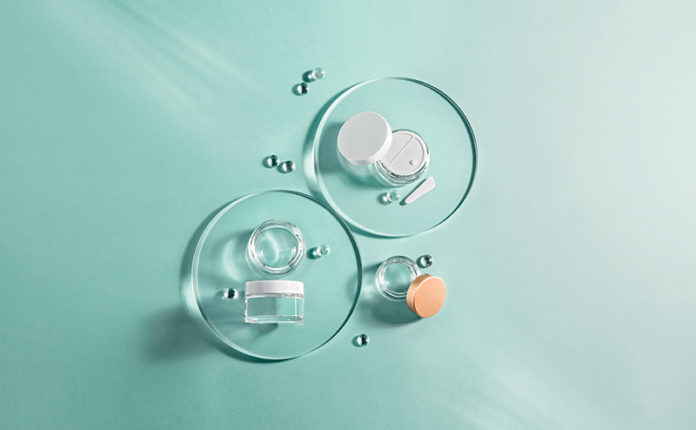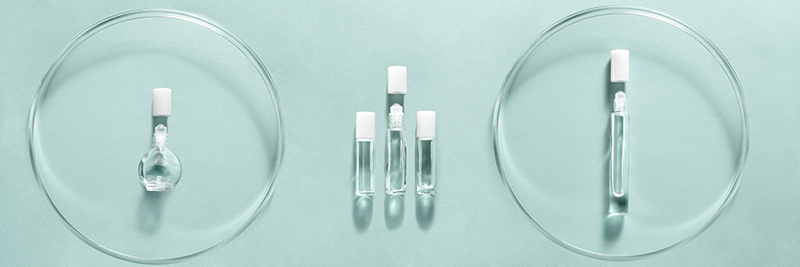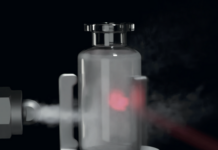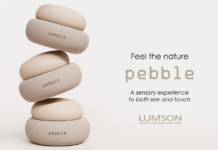
The Maria Jar line is Baralan’s latest news. A novelty that perfectly reflects the philosophy of the company that has been a point of reference in the cosmetic packaging industry since 1962. With their harmonious style, the three Maria Jars expand the offer of Baralan’s standard products in the 2021 Collection, as new ambassadors of an essential and timeless design, bringing with them the attention to innovation and sustainability.
How does a company like Baralan define Innovation and Sustainability, two key concepts in the contemporary world?
Innovation is conceived as the driver for new products’ development, it is the strategic lever that guides the evolution and improvement of the product, while sustainability is an essential value that perfectly fits with the Company’s mission: to give life to innovative and functional packaging, cared in detail, which meets the ethical and environmental needs of the market. A mission that has already been accomplished in Baralan’s products created with biobased raw materials as well as in the Maria Jar Line, the new range of jars for skincare products. Maurizio Ficcadenti, Global R&D Manager of Baralan, talks about this new line in this interview.

Let’s talk about Maria Jar, the new range of glass jars for skincare products that you are launching on the market. How would you describe it?
It is a line with a premium look that, at the same time, offers ease of use, cost effectiveness and sustainability. A perfect example of our philosophy aiming at developing products that are not only aesthetically pleasant, but also able to offer added value to our customers’ Brands and final consumers.
Maria Jars are attractive and functional at the same time. A perfect synthesis of innovation according to Baralan …
Yes, exactly. Innovation for us is a unique combination of experience, tradition and progress. It is the ability to offer to each customer the best possible solution through a careful study of design, through the proposal of different formats to meet the needs of the market and subsequently through the personalization of the product with various effects and decorations. Innovating means going beyond the ordinary, thinking outside the box and proposing original packaging, cared in detail, beautiful to look at, while still never forgetting about functionality, ergonomics and ease of use. Just like it happens with Maria Jar: an innovative, sustainable, functional line.
How do Maria Jar products differ from other jars already present in the Baralan’s catalog?
The design of the Maria Jar line, composed of three versions with a capacity of 50 ml, 75 ml and 100 ml, is completely new. In particular, the large diameter of the jar necks and the specific GPI 70 Double Entry thread are designed to ensure ease of use. The wide neck makes it easier to retrieve the product to facilitate use and reduce waste.
As a further innovation, the new Malang 70 cap has been developed in one unique size resulting in a single format suitable for the three jars, together with the new protection disc and spatula. Furthermore, the liner does not require glue to be positioned.
The cap, in turn, features a “double entry” thread that guarantees a quick and more homogenous closure around the neck’s circumference, ensuring integrity of the filled product with no product loss.
Furthermore, the combination of all three formats with the same accessories offers our Customers undoubted advantages not only in terms of supply and cost of components, but also in terms of purchasing, logistics and customization.
In addition to innovation, Maria Jar is also a perfect example of sustainability for Baralan. What are the “green” aspects of this range of products?
The green footprint, the common thread of most of Baralan’s new products, requires particular attention to products’ life cycle that, in practice, led us and will lead us to the development of packaging made as much as possible in mono-material to reduce waste and increase the possibility of reuse.
A concrete commitment, which is also evident from the characteristics of the Maria Jar line. Both the jars and the caps are made with fully recyclable materials and have already been designed for proper disposal at the end of their lifecycle. For example, for the jars we used glass, a material that can be recycled infinitely. In addition, both the jars and the caps are made in combination with post-industrial recycled material (PIR), to minimize waste.
The use of glass, which has always been part of our history, together with other recyclable materials allows us to offer an alternative and sustainable solution that integrates environmental criteria into the product industrialization process.
Furthermore, we have intentionally developed a single cap for all three versions of the Maria Jars and made a single production mold, thus avoiding energy waste within the production chain and the storage of large quantities of caps. A concrete example of reduction and sustainability.
Still focusing on the theme of sustainability, what are the principles that guide you in developing a new product?
In creating a product, it is important for us to guarantee functionality and aesthetics but, at the same time, to innovate by offering increasingly green solutions. Therefore, the combination between the 3Rs (Reduce, Reuse e Recycle) and the design of a packaging, with the end-life and disposal of the product are essential aspects: from the choice of reducing the use of components and materials for their realization to the possibility to reuse the materials deriving from industrial waste and from production processes, to the ease of recycling the product.
In addition to glass do you also use other materials?
Yes, we do. As we said before, glass has always been Baralan’s core business, which is considered as the main eco-friendly material since it can always be recycled, but, at the same time, our commitment is constantly aimed at researching, studying and selecting other sustainable materials. In recent years, Baralan has also oriented towards the selection of biopolymers that derive from renewable sources and natural materials, not linked to food chain, to be used for the production of alternative packaging to plastic, thus greatly reducing the ecological impact and contributing consequently to create a less polluted ecosystem.



















